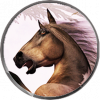Anatomical Elements MATs
 bradassociates
Posts: 106
bradassociates
Posts: 106
I've researched this topic thinking there would be a good tutorial somewhere, but after an hour of searching, I'm hoping someone here can give me a simple direction.
I'm attempting to recreate historically famous paintings in DAZ, that includes some nudes. Some of the genesis generation characters come with their own Iray genitalia materials, but most don't. Trying to apply gen mats from one character to another is a hit-or-miss, and never quite right without additional adjustments, and even then, it's not spot on.
I've read that using the torso surfaces and applying to the gens works is how to do it, but I've been unsuccess in applying them to the anatomical elements. My process I've been following:
- Highlight gen character in Scene window => Open Surfaces pane => highlight character => Surfaces => highlight (only) torso => right click => "Copy Selected Surfaces(s)"
- Highlight gens => Open Surfaces pane => highlight gens => right click => "Paste Selected Surface(s)"
But nothing happens, the gens remains white. Is there a process for doing this I'm missing?
Thanks in advance...


Comments
Regarding surface copy and paste, make sure both surfaces use the same shader, you may need to apply iray base shader to the target surface first.
You would need a torso to gen UV. It comes with skinbuilder for example and there are some free as well, GenTorso UV for G8F for example
After you done the steps you have already done in you description you just change the UV on the gens to one of the above UV.
Thanks! I see they have them for females, but do they make the torso to gen UV apps for G3M or G8Ms?
Glad I could help
Good luck with your renders.
Skinbuilder doesn't do male UVs at the moment, so there's nothing available in that product. You'll need something else.
You'll need to do a search for "G3M Genital Texture Helper", available as a freebie from Renderotica's forum (which is not allowed to be linked from here). You use the helper to do a map transfer from the Torso UV to the Anatomical Elements UV, then use your editor -- Photoshop or Gimp or whatever -- to edit them together. How much editing you decide to do depends on how much of the elements you need to be visible. (G3M and G8M Base Male are the same UV, so it should work for both. It may not work for any of the other named males, like Michael or Dante or Elijah or whoever, because they have slightly different UVs from base male. That said, there were very few characters in G3 apart from the main bundle characters that used the other UVs.)
Thank you, that is *very* helpful. On a side, the product content created is SO female-oriented...far more female products accross the board. So much for equality in the art world!
I was thinking that, depending on the size of your output and application (billboard, poster, t-shirt or postage stamp) certain... aspects of your render may not be that large in terms of number of pixels across. Sometimes it is easy to fix a problem with just a bit of post-rendering work, like you might dip the round, clone brush in an image editor into the desired, adjacent texture and then just drag a quick little version of the element you want. Similar to putting horns on a demon say. Or take your time drawing what you want in a vector illustration package*, then export the object as a 2D flat TIFF file, and paste it in as a layer-with-a-transparent border. Recent editors have things like Puppet Warp which can easily make limbs move around, and smaller elements can wiggle etc. Don't like what happened in the most recent step? CTRL-Z to go back and try again.
I love monkeying around with old paintings. I put my dog into the Night Watch by Rembrandt. Curiously the real painting apparently had some coats of varnish and revisions and stuff... in the bottom right corner there is at least one dog that has been scrubbed away.
Btw if you think I'm being rude with a masterpiece, well possibly but what about the guy who CUT the darn painting one time, to better fit one of his WALLS???!!
but what about the guy who CUT the darn painting one time, to better fit one of his WALLS???!!
*rasterized and vector programs are two related, but slightly different ways of creating bits and pieces of artwork. It's easy to type a question into Google and similar search engines, eg. "graphics" AND "what is the different between rasterized and vector-driven illustration programs?"